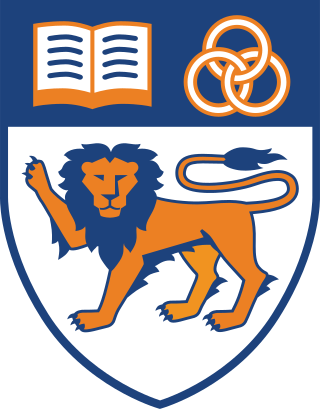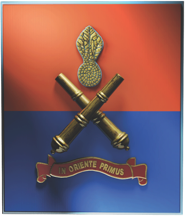Related Research Articles

The National University of Singapore (NUS) is a national public collegiate and research university in Singapore. It was officially established in 1980 by the merger of the University of Singapore and Nanyang University.

Goh Keng Swee, born Robert Goh Keng Swee, was a Singaporean statesman and economist who served as 2nd Deputy Prime Minister of Singapore between 1973 and 1985. Goh is widely recognised as one of the founding fathers of Singapore. He was also one of the founders of the People's Action Party (PAP), which has governed the country continuously since independence.
The Defence Science and Technology Group (DSTG) is part of the Australian Department of Defence which provides science and technology support to safeguard Australia and its national interests. The agency's name was changed from Defence Science and Technology Organisation (DSTO) on 1 July 2015. It is Australia's second largest government-funded science organisation after the CSIRO and its research outcomes have supported operations for over 100 years.

The Cabinet of Singapore forms the executive branch of the Government of Singapore together with the President. It is led by the Prime Minister who is the head of government. The prime minister is a Member of Parliament (MP) appointed by the president who in the president's judgment is likely to command the confidence of the majority of the Members of Parliament (MPs). The other Ministers in the Cabinet are Members of Parliament appointed by the president acting in accordance with the advice of the prime minister. Ministers are prohibited from holding any office of profit and from actively engaging in any commercial enterprise.

The Singapore Symphony Orchestra (SSO) is a symphony orchestra based in Singapore. It is Singapore's flagship orchestra. Its principal concert venue is the Esplanade – Theatres on the Bay. The orchestra also gives concerts at the Victoria Theatre and Concert Hall, and performs over 60 concerts per year. The orchestra was first established In 1978 with Choo Hoey its resident director. The orchestra's music director from 1997 to 2019 was Shui Lan, and Hans Graf its Chief Conductor from 2020 and Music Director from 2022. The SSO is part of the Singapore Symphony Group, which also manages the Singapore Symphony Choruses, the Singapore National Youth Orchestra (SNYO), the VCHpresents chamber music series, the Singapore International Piano Festival and the biennial National Piano and Violin Competition. It achieved third place in 2021 for Gramophone's Orchestra of the Year award, and made the list of the BBC Music Magazine's Top 21 Best Orchestras in the World in 2022.
The SAFTI Military Institute is a military institute of the Singapore Armed Forces (SAF) comprising five schools: Goh Keng Swee Command and Staff College, three SAF Advanced Schools, and the Officer Cadet School. Located on an 88 ha campus in Jurong West, it was originally established in 1966 in Pasir Laba Camp as the Singapore Armed Forces Training Institute (SAFTI) before it moved to its current location in 1995 and became known as the SAFTI Military Institute.

Toh Chin Chye was a Singaporean statesman and academic who served as Deputy Prime Minister of Singapore between 1959 and 1968. Toh is widely recognised as one of the founding fathers of Singapore. He was also one of the founders of the People's Action Party (PAP), which has governed the country continuously since independence.
Su Guaning is a Singaporean college administrator and academic who served as the president of Nanyang Technological University (NTU) between 2003 and 2011. He is currently President Emeritus of Nanyang Technological University (NTU).

The Promote Mandarin Council is a Singaporean organisation established in 1979 as part of then-PM Lee Kuan Yew's programme to promote Mandarin as the preferred language amongst Chinese Singaporeans.

The Singapore Volunteer Corps or the Singapore Special Constabulary, was a militia unit established in 1854 as the Singapore Volunteer Rifle Corps. The Corps underwent several reorganisations and was known by various names throughout its history. It was renamed the People's Defence Force, the predecessor of the Singapore Armed Forces (SAF) in 1965.
Singapore has had an history of armed conflict and personnel dating to the colonial period.

Gan Eng Seng was a Chinese businessman and philanthropist who was one of the early pioneers of Singapore. He is known for his generosity to many charitable causes in Malaya and Singapore during the British colonial era. Some of his most recognised contributions were the setting up of Gan Eng Seng School, the Thong Chai Medical Institution, Tan Tock Seng Hospital, and the Ee Hoe Hean Club.
So Drama! Entertainment is a Singapore media company owned by SAFRA National Service Association. In their portfolio are four brands - 883Jia, Power 98, Music and Drama Company and PIONEER.
The Ministry of Interior and Defence (MID) was a ministry of the Government of Singapore. It was established in 1965, with Goh Keng Swee as the inaugural minister. The ministry was responsible for both internal and external security, controlling both the police force and the armed forces.

The Chief of Defence Force is the head of the Singapore Armed Forces (SAF), who holds the rank of Lieutenant-General or Vice-Admiral. The Chief of Defence Force also serves as the aide-de-camp to the president of Singapore. The current Chief of Defence Force is Aaron Beng.

The Artillery is a formation of the Singapore Army, comprising four active battalions—the 20th, 21st, 23rd and 24th Battalions—and an undisclosed number of reservist battalions. The primary role of the Artillery formation is to deliver timely, accurate and effective fire in support of the manoeuvre force to accomplish missions. As an indirect fire support system, the gunners rely on the forward observer and target acquisition elements to provide the target's location, which is then passed to the command post to direct the gunners to fire.
SAFRA National Service Association is an organisation that was formed as a social and recreational club for National Servicemen from the Singapore Armed Forces. It was originally formed in 1972 as the "Singapore Armed Forces Reservist Association".

Seah Moon Ming is a Singaporean corporate executive who has contributed to several key engineering companies in Singapore, and is currently the Chairman of SMRT Corporation Ltd, SMRT Trains Ltd, SMRT TEL Pte Ltd and SMRT Buses Ltd.
References
- ↑ Chan, J. (2015). "Timeline". Singapore's Scientific Pioneers. pp. 114–115. ISBN 978-981-09-5893-0.
- ↑ ""DSO Story"". Archived from the original on 2015-09-23. Retrieved 2015-07-21.
- ↑ "DSO National Laboratories - Our History". 2024-02-19. Archived from the original on 2024-02-19. Retrieved 2024-02-29.
- ↑ "DSO National Laboratories - Our History". 2024-02-19. Archived from the original on 2024-02-19. Retrieved 2024-02-29.
- ↑ "DSO National Laboratories - Our History". 2024-02-19. Archived from the original on 2024-02-19. Retrieved 2024-02-29.
- ↑ "DSO National Laboratories - Our History". 2024-02-19. Archived from the original on 2024-02-19. Retrieved 2024-02-29.
- ↑ Larkin, Marilynn (July 2003). "Technology confronts SARS". The Lancet Infectious Diseases. 3 (7): 453. doi:10.1016/S1473-3099(03)00677-7. PMC 7106396 .
- ↑ Ng, Lisa F. P.; Wong, Michelle; Koh, Susie; Ooi, Eng-Eong; Tang, King-Fai; Leong, Hoe-Nam; Ling, Ai-Ee; Agathe, Lora V.; Tan, Jenny; Liu, Edison T.; Ren, Ee-Chee; Ng, Lee-Ching; Hibberd, Martin L. (January 2004). "Detection of Severe Acute Respiratory Syndrome Coronavirus in Blood of Infected Patients". Journal of Clinical Microbiology. 42 (1): 347–350. doi:10.1128/JCM.42.1.347-350.2004. ISSN 0095-1137. PMC 321706 . PMID 14715775.
- ↑ "DSO National Laboratories - Our History". 2024-02-19. Archived from the original on 2024-02-19. Retrieved 2024-02-29.